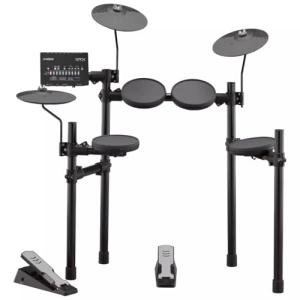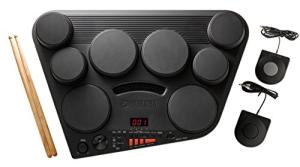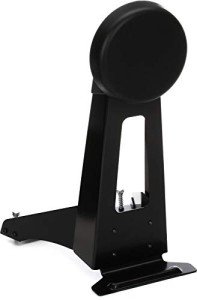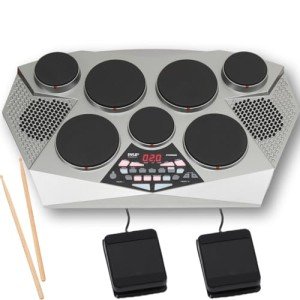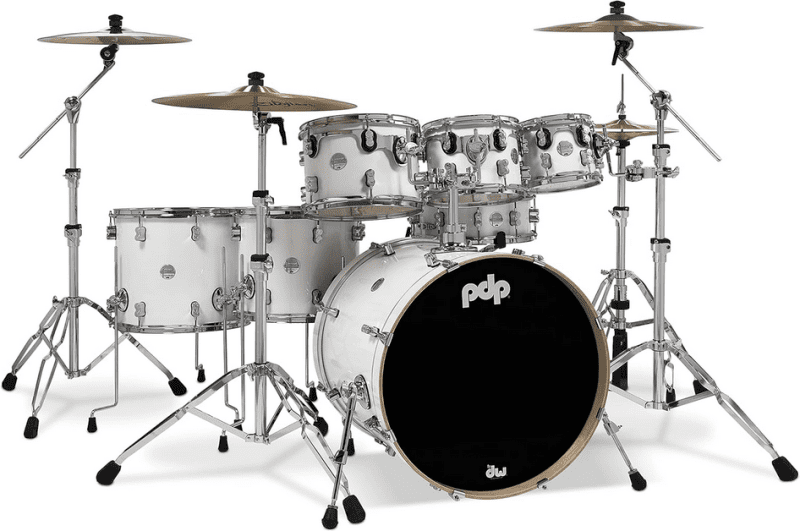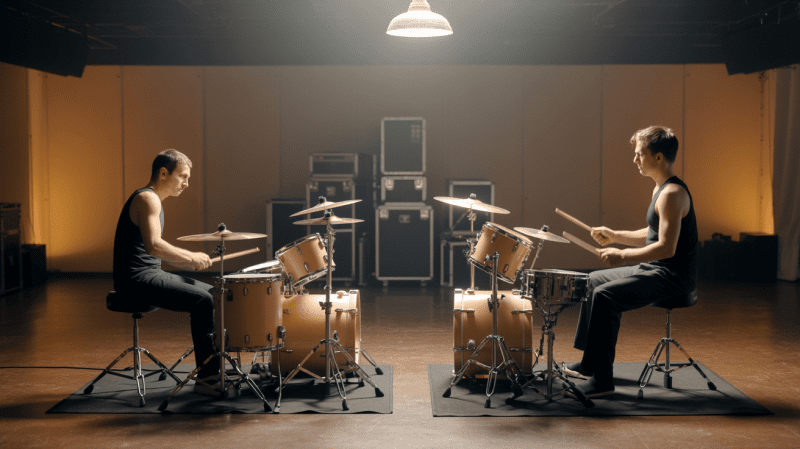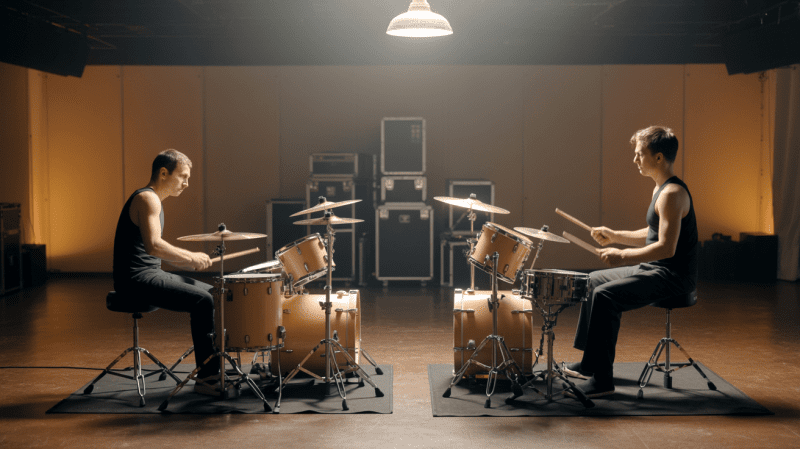rafting drum loops is a key part of creating compelling electronic music.
Understanding the role of drum loops can help you build tracks that keep listeners hooked.
From hip-hop to house, every electronic genre relies on strong, rhythmic beats that drive the song forward.

Essential drum sounds like kicks, snares, and hi-hats form the foundation of these loops.
Experimenting with different drum kits and patterns is crucial to developing your unique sound.
Don't forget to incorporate samples and loops from other tracks to add variety and interest.
Using drum machines and software tools can elevate your drum loops to new levels.
Enhance your creations with effects and mixing techniques to make them stand out.
Remember, the key to mastering drum programming is practice and experimentation.
Key Takeaways
- Crafting drum loops is essential for electronic music.
- Experiment with different sounds and patterns.
- Use tools and effects for enhanced drum loops.
Understanding Drum Loops and Their Role in Electronic Music
Drum loops are essential in electronic music, providing the foundation for many tracks. They set the tempo and create the rhythmic patterns that define different genres.
The Basics of Drum Loops
A drum loop is a repeating section of drum beats.
It typically consists of a combination of kick, snare, hi-hat, and percussion sounds.
These loops are used to create consistent rhythms throughout a track.
They can be created using a digital audio workstation (DAW) and can be adjusted to fit the tempo of the song.
Drum loops can be either pre-recorded or created from scratch using MIDI or virtual instruments.
In electronic music, loops help producers build tracks quickly and ensure the rhythm section is tight and on point.
Different Genres and Their Rhythms
Different genres of electronic music have distinct rhythms and drum loops.
In house music, the beat is usually steady with a kick drum on every quarter note, creating a driving and danceable rhythm. The tempo typically ranges from 110 to 130 BPM.
Trap music, on the other hand, incorporates fast hi-hat rolls and heavier 808 bass kicks. The tempo is often slower, around 70-75 BPM.
Hip hop also features varied drum patterns but often uses sampled drum breaks and loops from classic records.
Dance and EDM genres might use a more varied drum pattern with a higher tempo, around 120-140 BPM.
Each genre's unique drum loops contribute to its characteristic sound and feel, making it recognizable to listeners.
Essential Drum Sounds and Kits
Understanding the essential drum sounds and kits is key to creating a well-rounded and dynamic drum loop. Each component serves a unique purpose, from setting the foundational beat to adding complexity and interest.
Kick and Snare: The Heartbeat
The kick drum provides the base and power of any drum loop.
It's usually placed on the first beat of a measure, creating a strong, anchoring presence.
The snare drum, in contrast, offers a sharp, slicing sound that complements the kick and adds a sense of rhythm and energy.
A well-balanced combination of kick and snare is crucial because they set the overall feel of the loop.
Popular Sample Packs:
- 808 Kick Drums: Known for their deep, booming quality.
- Acoustic Snares: Offers a live feel, great for genres like rock and jazz.
Experimenting with both electronic and acoustic samples can help achieve a distinct and compelling sound.
Hi-Hats and Cymbals: Adding Groove
Hi-hats and cymbals are essential for adding groove and texture.
Hi-hats often take on a repetitive, rhythmic role, commonly found on off-beats. This gives the loop a shuffling or swinging feel.
Cymbals, including crash and ride, provide accents and transitions, adding brightness and variation.
Hi-hats can be either closed (short, tight sounds) or open (longer, more sustaining sounds).
Mixing both types can add complexity.
Cymbals should be used sparingly to maintain their impact.
Common Cymbal and Hi-Hat Choices:
- Closed Hi-Hats: Ideal for tight, controlled rhythms.
- Crash Cymbals: Perfect for dramatic accents and transitions.
Percussion: The Spice of Variety
Percussion elements add unique flavor and variety to drum loops.
This includes sounds like congas, bongos, shakers, and tambourines.
These elements offer a wide range of textures and timbres, enhancing the overall complexity and depth of the loop.
Using percussion wisely can prevent the loop from becoming monotonous.
For instance, placing shakers on the off-beats or adding congas in the background can create a richer, more layered sound.
Typical Percussion Instruments:
- Congas and Bongos: Add a tropical or Latin vibe.
- Shakers and Tambourines: Provide light, continuous rhythmic support.
Combining these drum sounds and kits thoughtfully will lead to more engaging and professional-sounding drum loops.
Crafting Your Own Drum Patterns

Creating drum loops for electronic music can elevate your tracks, offering unique and dynamic rhythms. This guide breaks down fundamental and advanced techniques to help you program engaging drum patterns.
Step Sequencing Basics
Step sequencing is a powerful way to build drum patterns.
Common in digital audio workstations (DAWs), it allows users to program beats by placing notes on a grid.
Typically, each step in a sequence represents a specific time division, such as a quarter note or sixteenth note.
Start with the kick drum on the downbeat—usually the first beat of each measure.
Add a snare on the second and fourth beats for a basic backbeat. Hi-hats can fill in off-beats to add rhythm and texture.
Experiment with velocity and swing settings to create a more human feel.
Swing alters the timing of off-beats to make them feel slightly delayed, adding groove to the pattern.
Use a metronome to keep time and ensure consistency in your patterns.
Programming Complex Rhythms
To create complex rhythms, explore different time signatures beyond the standard 4/4.
For instance, a 3/4 or 7/8 time signature can introduce interesting variations.
Incorporate polyrhythms to layer multiple rhythms over each other, enhancing depth and complexity.
Add variation within your patterns to maintain listener interest.
Change the placement or type of drum hit every few measures.
Consider using reverb, EQ, and saturation to vary the sound textures.
For example, reverb on a snare can add space, while EQ adjustments can make certain drum hits stand out.
Refer to guides like Studio Brootle for specific techniques, and LANDR Blog for detailed programming ideas.
Remaking patterns from existing tracks can also improve your skill, helping you understand how different elements work together in a composition.
Incorporating Samples and Loops

Integrating samples and loops into your electronic music allows for a rich and diverse sound.
This can range from using pre-made loops to manipulating audio samples for a unique groove and bassline.
Using Pre-made Loops
Pre-made loops are an excellent resource for quick music production.
Websites offer a wide range of royalty-free loops that can be easily added to your DAW.
These loops often include drums, basslines, and melodic phrases.
Using these can save time and help you focus on arrangement and other creative aspects.
The loop tab in most DAWs makes it simple to browse and drag loops into your project.
Make sure to choose loops that match the BPM and key of your track to ensure a seamless fit.
Layering different loops can also add depth and complexity to your music.
For instance, combining a drum loop with a bassline loop can create a solid foundation for your track.
Manipulating Audio Samples
Manipulating audio samples allows for more creative freedom and originality.
You can use a sampler or directly edit the samples in your DAW to tweak and transform them.
Techniques like time-stretching, pitch-shifting, and applying effects can completely change the character of a sample.
One way to start is by chopping up a sample to create shorter loops or phrases.
This can help you generate new rhythms and grooves that are unique to your track.
Layering various manipulated samples can result in a complex and interesting soundscape.
Adjusting the EQ and adding filters helps to blend the samples seamlessly into your mix.
Utilizing Drum Machines and Software
Modern drum machines and specialized software play a crucial role in crafting drum loops for electronic music.
These tools allow users to manipulate beats, rhythms, and sounds in extensive ways, offering flexibility and creativity in music production.
Modern Drum Machines
Modern drum machines are versatile tools in the music studio.
Devices like the MPC Live and popular grooveboxes let musicians create and manipulate drum patterns with ease.
These machines often come with built-in sequencers and sample loopers that make it simple to create loops.
Users can record, edit, and play loops live, adding layers of complexity to their tracks.
MIDI editors in these machines allow precise control over each beat and rhythm.
Drum machines also allow for real-time tweaking.
Adjust tempo, insert effects, and edit groove characteristics to fit the music style.
This is invaluable for electronic musicians looking to experiment with different sounds and beats.
The seamless integration of these features in drum machines makes them essential in modern music production setups.
Software Solutions for Drum Loops
Software tools offer flexibility for creating drum loops. Applications like Soundtrap provide an intuitive platform for musicians to build and edit drum patterns.
With an array of digital drum kits and sound libraries, users can easily craft unique loops.
AI-powered tools in some software can generate drum patterns based on user input. This allows for quick iteration and creativity.
Users can upload their own samples or choose from a vast collection provided within the software to tailor their sound.
Advanced features in drum programming software enable detailed editing. Users can control every aspect of a loop, from velocity to timing, ensuring precision and uniqueness in their electronic music projects.
Integrating these software solutions into a music studio setup enhances productivity and opens up new possibilities for creating compelling drum loops.
Enhancing Loops with Effects and Mixing Techniques
Enhancing drum loops in electronic music involves careful use of volume, panning, and creative effects to achieve a unique sound. These techniques are essential for adding depth and interest to your project.
Dynamics and Space with Volume and Panning
Adjusting the volume of each element within a loop helps create a balanced mix. Start by setting the volume levels for each drum hit to ensure none of them dominate the mix.
Kick drums should typically be more pronounced, while hi-hats and snares can be slightly softer.
Panning is crucial for creating space in your mix. By positioning different drum sounds in various parts of the stereo field, you can avoid a cluttered center.
For example, pan hi-hats slightly to the left or right, while keeping the kick and snare centered. This technique adds width and depth to the loop.
Creative Effects for Unique Sounds
Apply creative effects to add character to your drum loops. Reverb can add a sense of space and depth, making the drums sound larger than life.
Use a small amount of reverb on hi-hats and snares to avoid muddiness.
Delay is another powerful effect. Sync it with the tempo of your track and apply it sparingly to snares or cymbals for a repeating echo that enhances rhythm.
Experiment with other effects like flanger and phaser to introduce movement and modulation.
A touch of distortion or saturation can add warmth and grit, making the drum loop stand out in a mix.
Practical Tips for Drum Loop Creation
Creating drum loops for electronic music involves several steps that can improve workflow and unleash creativity. These tips help streamline the process and inspire new ideas.
Workflow Enhancements
Organizing your project in a Digital Audio Workstation (DAW) like Ableton or Logic Pro can significantly improve efficiency.
Begin by setting up folders for various samples and categorize them by type, such as kick, snare, and hi-hats. This makes it easier to locate sounds quickly.
Utilize MIDI mapping and shortcuts to speed up your workflow. For instance, assigning specific functions to MIDI controllers can enable real-time adjustments and faster editing.
Implementing creative sampling techniques like slicing loops can add variety and save time during the editing process.
Regularly save your project to avoid losing work. It's a good habit to save different versions, allowing you to revisit older ideas.
Copy-paste features also streamline the workflow by letting you quickly replicate drum patterns or segments.
Maximizing Creativity
Experimenting with effects like delay or distortion can enhance your loops. Use these effects selectively to add unique textures without overwhelming the mix.
Layering multiple drum sounds can create rich, complex loops, giving your music depth and dimension.
Using a sampler to blend different elements can spark new ideas. Try manipulating the pitch, length, and playback speed of samples.
Working in real-time allows for immediate feedback, making it easier to fine-tune the loop.
Sharing your loops with others can offer fresh perspectives and constructive feedback. Collaborate with other producers to expand your creative horizons.
Regular practice is crucial; the more you experiment and create, the better your drum loops will become.
Sharing and Collaborating on Drum Loops
Sharing drum loops can unlock new creative possibilities. Musicians can exchange their loops using online platforms like Splice or Google Drive, making it easy to collaborate on projects.
When collaborating, it's important to communicate clearly. Use notes or comments to explain your ideas or changes. This helps ensure everyone is on the same page and the final product meets expectations.
In a studio setting, real-time collaboration tools like Ableton Link or cloud-based DAWs allow musicians to work together seamlessly.
These tools keep projects synchronized, which is crucial for creating professional-sounding tracks.
Using a shared folder system can help organize different versions of loops. Naming files properly and keeping track of changes allows easier project management.
Example of a shared folder structure:
| Folder Name | Contents |
|---|---|
| Kick_Snare_Loops | Basic drum patterns |
| Hi-Hat_Percussion | Hi-hat and percussion loops |
| Processed_Loops | Loops with effects |
| Unused_Loops | Loops not currently in use |
Working with other musicians can enrich your music. Each person's style and technique contribute to a more dynamic track.
It's important to respect each other’s input and work toward a common vision.
Utilize cloud services to store and share your projects. This ensures that all collaborators have access to the latest versions and can contribute whenever they're available.
Advanced Techniques and Trends in Drum Loop Production
Creating advanced drum loops involves techniques like layering and adding a human touch to electronic beats. It also includes exploring various genres, from lo-fi to EDM, each with its unique sound and rhythm.
Layering and Humanizing Beats
Layering drum sounds is a key technique to create rich and dynamic beats. Producers often layer multiple kick drums, snares, and hi-hats to enhance the complexity and depth of their tracks.
It's common to combine a deep kick with a punchy one to achieve a fuller sound.
Humanizing beats can make them feel more organic and less robotic. Varying the velocity of individual drum hits and slightly off-setting them from the grid can add a natural groove.
Real-time adjustments and manual tweaks are essential in achieving this effect.
Using software tools or MIDI controllers allows for dynamic control over drum sounds, enabling producers to add real-time variations and nuances.
This technique is especially prevalent in dance music and genres that benefit from a lively, human feel.
Exploring Genres: From Lo-fi to EDM
Different genres demand different drum programming styles and techniques.
In lo-fi music, drum sounds are often characterized by a raw, unpolished feel. Samples from old vinyl records, with their inherent pops and cracks, are commonly used to create a vintage texture.
EDM, on the other hand, emphasizes powerful and clear drum patterns. The kick drum typically follows a four-to-the-floor rhythm, giving it a driving pulse.
Techniques such as sidechain compression are used to ensure the kick drum cuts through the mix, providing the track with its essential energy.
Disco influences in modern dance music often lead to the inclusion of groovy, syncopated rhythms. Chopped and edited drum loops, combined with sampled live drums, can infuse a track with a retro yet contemporary vibe.
Frequently Asked Questions
Drum loops are essential in electronic music. This section answers common questions about best practices, software tools, and legalities related to drum loop creation.
What are the best practices for sampling drum loops in electronic music production?
When sampling drum loops, make sure to use high-quality samples. Focus on matching the sample's tempo to your track. Use effects like EQ and reverb sparingly to avoid muddying the mix. Always credit the original source if using pre-made loops.
How can you program realistic drum tracks in Ableton Live Lite?
To program realistic drum tracks in Ableton Live Lite, use the Drum Rack. Layer different drum sounds to add depth. Add subtle variations in velocity and timing to mimic a human drummer. Using Swing can create a natural feel.
What is the process for creating drum loops in FL Studio?
Begin by selecting your drum samples. Place kick, snare, and hi-hat samples in the Step Sequencer. Adjust the tempo and create a basic pattern. Add variation by using different samples and creating fills. Humanize the loop by nudging notes slightly off the grid.
Can you detail the steps for making a basic drum loop in Ableton?
Open Ableton and create a new MIDI track. Load a Drum Rack and choose your drum samples. Draw a simple pattern in the MIDI clip, starting with a kick on beats 1 and 3, and a snare on beats 2 and 4. Add hi-hats on every 1/8 note. Experiment with variations.
Which software tools are most recommended for writing electronic music drum parts?
Some of the most recommended tools include Ableton Live, FL Studio, and Logic Pro. Each of these DAWs offers robust features for drum programming. Specialized plugins like Native Instruments Battery and Xfer Serum are also popular among producers.
Are there legal considerations when using sampled drum loops in music production?
Yes, using sampled drum loops can have legal implications. Always ensure you have the right to use the samples. This may involve purchasing sample packs or getting permission from the creator.
Credit the original creator if required. Using royalty-free samples can simplify this issue.

